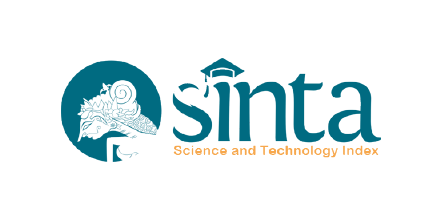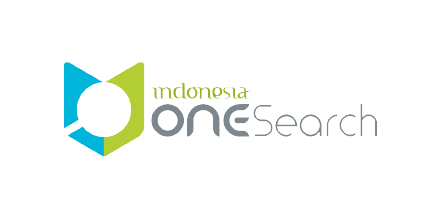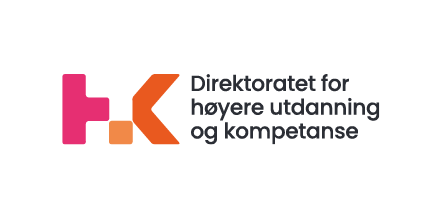Access to Disclosure of Disasters Information for Deaf People through Sign Language Interpreter
DOI:
https://doi.org/10.21776/ub.ijds.2022.009.01.11Keywords:
Deaf People, Sign Language Interpreter, Sign Language, Information AccessAbstract
There are plenty of information or news regarding natural disasters being inaccessible for Deaf people, and this stems from lack of Sign Language Interpreters. Urgency Sign Language Interpreters have an important role in bridging communication between society and the entire Deaf population, Sign Language Interpreters can also help people with Deafness in accessing information comprehensively on the aforementioned subject (natural disasters). Mostly, Deaf people communicate through sign language in their everyday lives, although Deaf people are still experiencing exclusion in discerning the newest and developing information on the current state of world affairs. This study aimed to elaborate situations faced by Deaf people in accessing information on natural disasters around them, their needs on accessing said information, and also urgency as well as obstacles faced in providing Sign Language Interpreters. This research will use qualitative approach by means of document/literature study to gather data from various international as well as national articles in general.
References
Al Anshori, A. N. (2020). Jumlah Penyandang Disabilitas di Indonesia Menurut Kementerian Sosial. Retrieved May 26, 2022, from Liputan6.com website: https://www.liputan6.com/disabilitas/read/4351496/jumlah-penyandang-disabilitas-di-indonesia-menurut-kementerian-sosial
Bennett, DeeDee. (2020). Five Years Later: Assessing the Implementation of the Four Priorities of the Sendai Framework for Inclusion of People with Disabilities. International Journal of Disaster Risk Science, 11(2), 155–166. https://doi.org/10.1007/s13753-020-00267-w
Bennett, Deedee, LaForce, S., & Touzet, C. (2018). American Sign Language & Emergency Alerts: The Relationship between Language, Disability, and Accessible Emergency Messaging DeeDee Bennett*. International Journal of Mass Emergencies and Disasters, 36(1), 71–87.
BNPB. (2019). Rencana Nasional Penanggulangan Bencana 2020-2024. In Badan Nasional Penanggulangan Bencana. Retrieved from https://www.bnpb.go.id//uploads/renas/1/BUKU RENAS PB.pdf
Brunson, J. L. (2008). Your case will now be heard: Sign language interpreters as problematic accommodations in legal interactions. Journal of Deaf Studies and Deaf Education, 13(1), 77–91. https://doi.org/10.1093/deafed/enm032
Calgaro, E., Craig, N., Craig, L., Dominey-Howes, D., & Allen, J. (2021). Silent no more: Identifying and breaking through the barriers that d/Deaf people face in responding to hazards and disasters. International Journal of Disaster Risk Reduction, 57(June 2020), 102156. https://doi.org/10.1016/j.ijdrr.2021.102156
Correia, L. P. de F., & Ferreira, M. de A. (2021). Health care of deaf persons during coronavirus pandemics. Revista Brasileira de Enfermagem, 75(Suppl 1), e20201036. https://doi.org/10.1590/0034-7167-2020-1036
De Meulder, M., & Haualand, H. (2019). Sign language interpreting services: A quick fix for inclusion? Translation and Interpreting Studies, 16(2), 1–23. https://doi.org/10.1075/tis.18008.dem
Effendi, J. (2018). Penjurubahasaan dalam Bahasa Isyarat. Jakarta.
Gumelar, G., Hafiar, H., & Subekti, P. (2018). Konstruksi Makna Bisindo Sebagai Budaya Tuli Bagi Anggota Gerkatin. Informasi, 48(1), 65. https://doi.org/10.21831/informasi.v48i1.17727
Haualand, H. (2021). Sign Language Interpreting: A Human Rights Issue. International Journal of Interpreter Education, 1(1), 95–110. Retrieved from http://www.wfdeaf.org/projects.html
Irawan, D., & Lanin, I. (2021). Bahasa Isyaratkan Budaya: SIBI vs. BISINDO.
Jones, E. G., & Boyle, J. S. (2011). Working with Translators and Interpreters. Journal of Transcultural Nursing, 22(2), 109–115. https://doi.org/10.1177/1043659610395767
Kellett Bidoli, C. J. (2010). Interpreting from speech to sign: Italian television news reports. Interpreters Newsletter, (15), 173–191.
Kemenkes RI. (2019). Infodatin: Disabilitas Rungu. Retrieved from Pusat Data dan Informasi Kementrian Kesehatan RI website: https://pusdatin.kemkes.go.id/resources/download/pusdatin/infodatin/infodatin-tunarungu-2019.pdf
Khumairoh, Z., Widana, I. D. K. K., & Sumantri, S. H. (2021). The role of communication as the disaster risk reduction in Indonesia capital city transference policy. IOP Conference Series: Earth and Environmental Science, 708(1). https://doi.org/10.1088/1755-1315/708/1/012101
King, J., Edwards, N., Watling, H., & Hair, S. (2019). Barriers to disability-inclusive disaster management in the Solomon Islands: Perspectives of people with disability. International Journal of Disaster Risk Reduction, 34(December 2018), 459–466. https://doi.org/10.1016/j.ijdrr.2018.12.017
Kurz, I., & Mikulasek, B. (2004). Television as a source of information for the deaf and hearing impaired. Captions and sign language on Austrian TV. Meta, 49(1), 81–88. https://doi.org/10.7202/009023ar
Leeson, L. (2020). Ophelia, Emma, and the beast from the east effortful engaging and the provision of sign language interpreting in emergencies. Disaster Prevention and Management: An International Journal, 29(2), 187–199. https://doi.org/10.1108/DPM-01-2019-0007
Lumsden, K., & Black, A. (2022). ‘Sorry, I’m dead, it’s too late now’: barriers faced by D/deaf citizens when accessing police services. Disability and Society, 37(3), 476–495. https://doi.org/10.1080/09687599.2020.1829555
Mahalli. (2020). Masih Ada Gap Signifikan dalam Aksesibilitas Media bagi Komunitas Tuli di Indonesia. Retrieved May 25, 2022, from The Conversation.com website: https://theconversation.com/masih-ada-gap-signifikan-dalam-aksesibilitas-media-bagi-komunitas-tuli-di-indonesia-149009
Marucha, A. N., & Ngigi, S. (2018). From Exclusion to Inclusion : Integration of Kenya Sign Language During Television Newscasts in Kenya From Exclusion to Inclusion : Integration of Kenya Sign Language During Television Newscasts in Kenya. Journal of Literature, Languages and Linguistics, 42, 35–62.
Mathews, E., Cadwell, P., O’Boyle, S., & Dunne, S. (2022). Crisis interpreting and Deaf community access in the COVID-19 pandemic. Perspectives: Studies in Translation Theory and Practice, 0(0), 1–19. https://doi.org/10.1080/0907676X.2022.2028873
McKee, R. (2014). Breaking news: Sign language interpreters on television during natural disasters. Interpreting. International Journal of Research and Practice in Interpreting, 16(1), 107–130. https://doi.org/10.1075/intp.16.1.06kee
Murray, J. B., Klinger, L., & McKinnon, C. C. (2007). The deaf: An exploration of their participation in community life. OTJR Occupation, Participation and Health, 27(3), 113–120. https://doi.org/10.1177/153944920702700305
Nandaafrz. (2020). PLJ 5 Tahun Melayani Teman Tuli Indonesia. Retrieved from Kamibijak.com website: https://www.kamibijak.com/v/plj-5-tahun-melayani-teman-tuli-indonesia
Napier, J. (2004). Sign language interpreter training, testing, and accreditation: An international comparison. American Annals of the Deaf, 149(4), 350–359. https://doi.org/10.1353/aad.2005.0007
National Association of the Deaf. (2016). Position Statement on Accessible Emergency Management for Deaf and Hard of Hearing People. Retrieved from National Association of the Deaf website: https://www.nad.org/about-us/position-statements/position-statement-on-accessible-emergency-management-for-deaf-and-hard-of-hearing-people/
Neuhauser, L., Ivey, S. L., Huang, D., Engelman, A., Tseng, W., Dahrouge, D., … Kealey, M. (2013). Availability and Readability of Emergency Preparedness Materials for Deaf and Hard-of-Hearing and Older Adult Populations: Issues and Assessments. PLoS ONE, 8(2), 9–11. https://doi.org/10.1371/journal.pone.0055614
Nikolaraizi, M., Argyropoulos, V., Papazafiri, M., & Kofidou, C. (2021). Promoting accessible and inclusive education on disaster risk reduction: the case of students with sensory disabilities. International Journal of Inclusive Education, 0(0), 1–15. https://doi.org/10.1080/13603116.2020.1862408
Pertiwi, P., Llewellyn, G., & Villeneuve, M. (2019). People with disabilities as key actors in community-based disaster risk reduction. Disability and Society, Vol. 34, pp. 1419–1444. https://doi.org/10.1080/09687599.2019.1584092
Prasodjo, S. (2019). Narasi Pengabdian dalam Pemberitaan Juru Bahasa Isyarat. Retrieved from Remotivi website: https://www.remotivi.or.id/amatan/554/narasi-pengabdian-dalam-pemberitaan-juru-bahasa-isyarat
Ruikai, D. (2021). Information Accessibility for Public Health Emergencies-A Case Study of Information Accessibility during the New Coronavirus Outbreak. Frontiers of Law in China, 16(1), 58–78. https://doi.org/10.3868/s050-010-021-0004-3
Russell, D., McLaughlin, J., & Demko, R. (2018). Emergency Communication Access and Alerting System. Retrieved from https://www.chs.ca/sites/default/files/barrier-free_emergency_communication_access_and_alerting_system_research_report.pdf
Salkić, N., Švraka, E., & Hadžiefendić, M. P. (2018). Factor Analysis of Deaf Persons Communication Systems. World Journal of Research and Review, 6(3), 21–26.
Solvang, P. K., & Haualand, H. (2014). Accessibility and diversity: Deaf space in action. Scandinavian Journal of Disability Research, 16(1), 1–13. https://doi.org/10.1080/15017419.2012.761158
Sutrisnadipraja, G., Shesilia K, N., Putri F, S., Yulianto, Y., Handayani, P., & Sembiring, W. P. (2019). Intervensi Psikoedukasi Dalam Mengatasi Stigma Dan Hambatan Komunikasi Pada Teman Tuli Yang Tergabung Dalam Gerkatin Kepemudaan. Jurnal Bakti Masyarakat Indonesia, 2(1), 191–200. https://doi.org/10.24912/jbmi.v2i1.4348
Takayama, K. (2017). Disaster Relief and Crisis Intervention with Deaf Communities: Lessons Learned from the Japanese Deaf Community. Journal of Social Work in Disability and Rehabilitation, 16(3–4), 247–260. https://doi.org/10.1080/1536710X.2017.1372241
Wedayanti, N. P. L. (2019). Teman Tuli diantara SIBI dan BISINDO. Seminar Riset Linguistik Pengajaran Bahasa (SENARILIP III), 137–146. Retrieved from http://erepo.unud.ac.id/id/eprint/30611/1/90106661deefaa4e87c0d68f1fa0537d.pdf
WFD Board, & WASLI Board. (2015). WASLI and WFD Guidelines: Communication during natural disasters and other mass emergencies for deaf people who use signed language. Retrieved from http://wfdeaf.org/wp-content/uploads/2015/02/WFD-and-WASLI-Communication-during-natural-disasters-and-other-mass-emergencies-for-deaf-people-who-use-signed-language-Jan-2015-FINAL.pdf
Wijaya, H. N. (2018). Tak Satupun Juru Bahasa Isyarat dari Guru SLB. Retrieved from Solider.id website: https://www.solider.id/baca/4358-tak-satupun-juru-bahasa-isyarat-berasal-guru-slb
Xiao, X., & Li, F. (2013). Sign language interpreting on Chinese TV: a survey on user perspectives. Perspectives: Studies in Tanslatology, 21(1), 100–116. https://doi.org/10.1080/0907676X.2011.632690
Young, A., Ferguson-Coleman, E., & Keady, J. (2018). Authentic public and patient involvement with Deaf sign language users: It is not just about language access. Dementia, 17(8), 1001–1010. https://doi.org/10.1177/1471301218789567
Yusuf, A. N. I., & Tajibu, K. (2021). Pengaruh Siaran Berita Bahasa Isyarat Indonesia (Bisindo) Di Televisi Terhadap Pemahaman Informasi Khalayak. Jurnal Mercusuar, 2(2), 33–47. Retrieved from http://journal.uin-alauddin.ac.id/index.php/mercusuar/article/view/21953%0Ahttp://journal.uin-alauddin.ac.id/index.php/mercusuar/article/viewFile/21953/11768
Published
How to Cite
License
Copyright (c) 2022 Siti Fauziyah, Lina Miftahul Jannah

This work is licensed under a Creative Commons Attribution-NonCommercial 4.0 International License.















